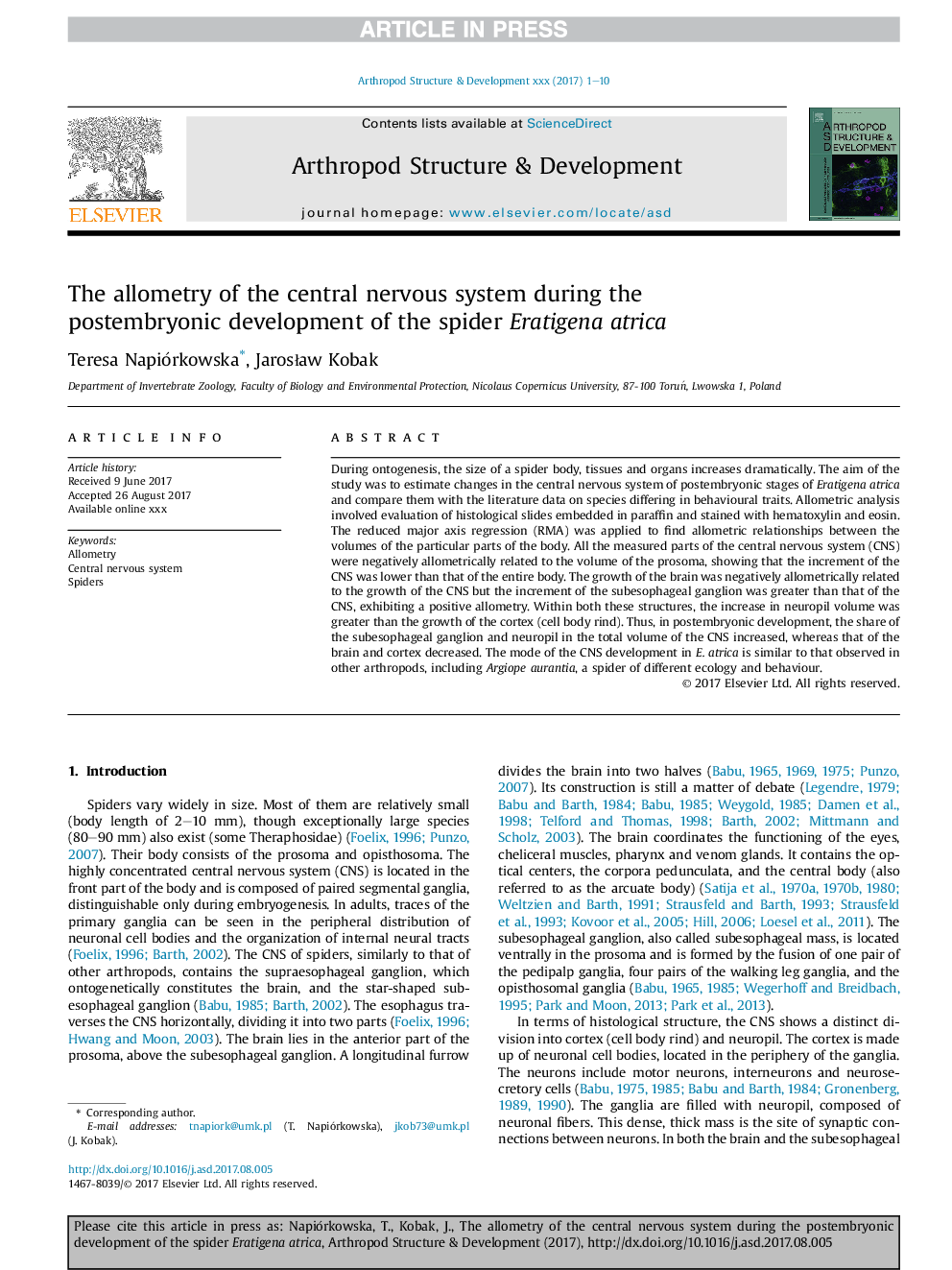| Article ID | Journal | Published Year | Pages | File Type |
|---|---|---|---|---|
| 8624724 | Arthropod Structure & Development | 2017 | 10 Pages |
Abstract
During ontogenesis, the size of a spider body, tissues and organs increases dramatically. The aim of the study was to estimate changes in the central nervous system of postembryonic stages of Eratigena atrica and compare them with the literature data on species differing in behavioural traits. Allometric analysis involved evaluation of histological slides embedded in paraffin and stained with hematoxylin and eosin. The reduced major axis regression (RMA) was applied to find allometric relationships between the volumes of the particular parts of the body. All the measured parts of the central nervous system (CNS) were negatively allometrically related to the volume of the prosoma, showing that the increment of the CNS was lower than that of the entire body. The growth of the brain was negatively allometrically related to the growth of the CNS but the increment of the subesophageal ganglion was greater than that of the CNS, exhibiting a positive allometry. Within both these structures, the increase in neuropil volume was greater than the growth of the cortex (cell body rind). Thus, in postembryonic development, the share of the subesophageal ganglion and neuropil in the total volume of the CNS increased, whereas that of the brain and cortex decreased. The mode of the CNS development in E. atrica is similar to that observed in other arthropods, including Argiope aurantia, a spider of different ecology and behaviour.
Related Topics
Life Sciences
Agricultural and Biological Sciences
Insect Science
Authors
Teresa Napiórkowska, JarosÅaw Kobak,
